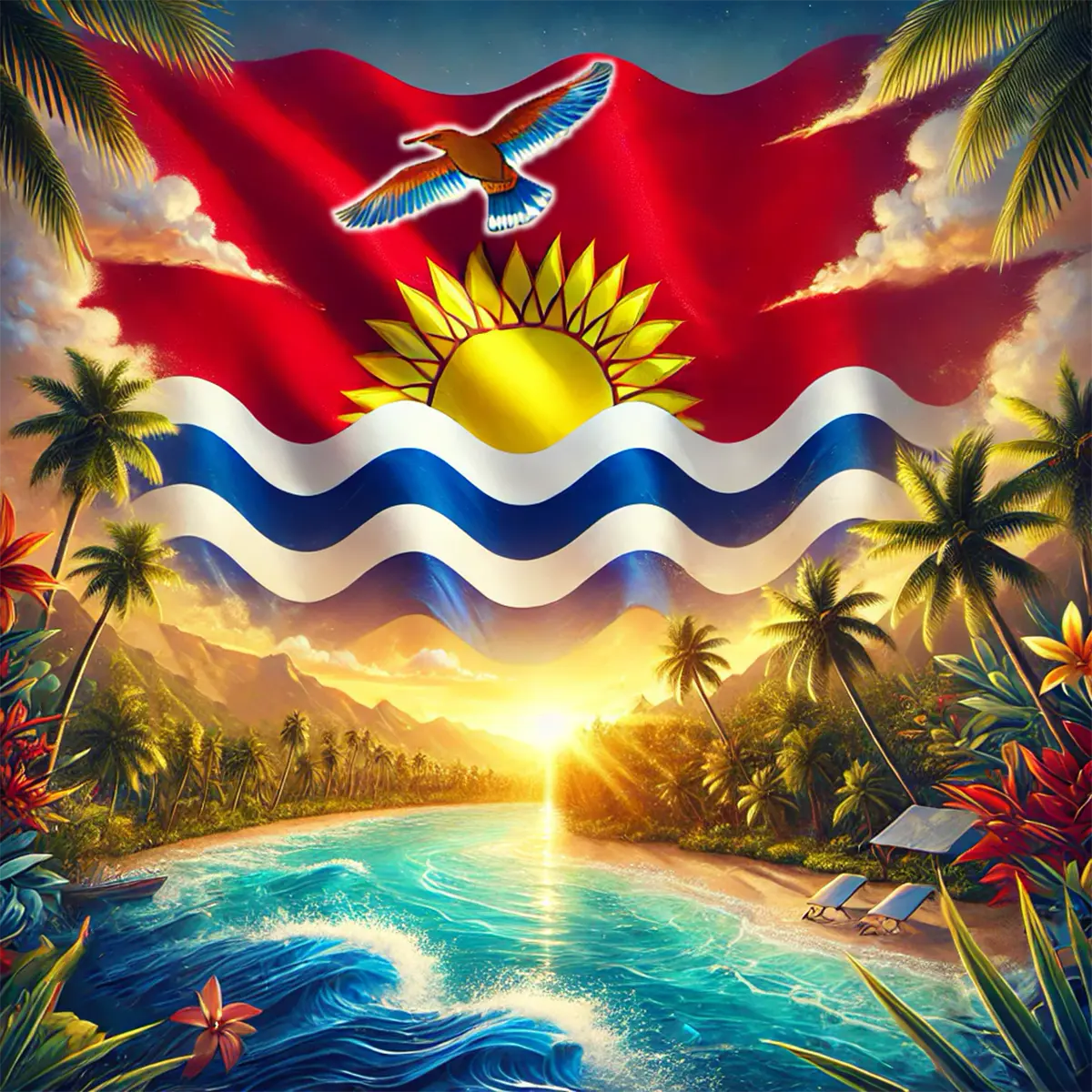Kiribati consists of 32 atolls (coral islands) and one elevated coral island located in the central Pacific Ocean. They are divided into three main groups: the Gilbert Islands, the Phoenix Islands, and the Line Islands. The Gilbert Islands are the most densely populated and consist of islands: Abaianga, Abemama, Aranoa, Aroriai, Banuaba, Beru, Butaritari, Kuraio, Mayana, Marakei, Nikunau, Nonoti, Onetoa, Tarawa, Tabiteuea, Tamakai and Taputeuea. The country's capital, South Tarawa, is also part of this group. It is the political and economic center of Kiribati. The Phoenix Islands consist of remote and less populated islands such as Birni, Enderbury, Canton, Makina, Manra, Nikumaroro, Orona and Rawaki. The mainland islands include Banaba, the only raised coral island, as well as Carolina, Flint, Kiritimati, Molden, Starbuck, Voskaejd, Terinay, Tabuaeran, and Terinaman. Known as Christmas Island, Kiritimati is the largest atoll in the world by area and is important for fishing and tourism.
Before all the above-mentioned islands became one and united under the common name of Kiribati, they had their own past and flags that form a common history of formation. One of these islands is the Kingdom of Abemama, located in the central Pacific Ocean as part of the Gilbert Islands group. The flag of the Kingdom of Abemama, which was used until 1889, consisted of a blue cloth with a white cross of St. Andrew and three white five-pointed stars located in each of the four blue triangles located at the edges of the flag. The cross of St. Andrew, which resembles an X, symbolized the connection between the islands and the Christian faith, which at that time had become an integral part of Abemama culture. However, the flag was originally slightly different, with 4 white stars instead of 3. This version was used for only one year, 1884, and there is no reliable information to explain the symbolism of the stars and why there were 4 and then 3. However, before the British annexation in 1892, the Abemama flag changed one more time. The new flag consisted of three horizontal stripes: red, yellow, and green in the appropriate sequence. A black shark was depicted in the center of the flag:
- The red color symbolized courage and strength;
- yellow - wealth and prosperity;
- green - fertility and hope;
- the black shark became a symbol of courage and the islanders' connection to the sea, which provided their livelihood and cultural identity.

In 1892, the Gilbert Islands were officially annexed by the United Kingdom, and Abemama lost its independence. The British administration introduced new laws and regulations that often contradicted the traditional customs of the islanders.
The flag of the period was the standard British flag. The Union Jack consisted of a blue cloth with a red cross of St. George (the patron saint of England) superimposed on a white cross, which in turn intersected with a diagonal white cross of St. Andrew (the patron saint of Scotland) and a red diagonal cross of St. Patrick (the patron saint of Ireland).

In 1937, the colonial status of the islands was changed to a separate administrative unit - the Colony of the Gilbert and Ellis Islands. A new flag was adopted for this colony, consisting of the Union Jack in the upper left corner and the colonial coat of arms in the right. The colony's coat of arms looked like the modern Kiribati flag, namely a frigate, sun and sea waves, but was placed on a shield. Japanese troops occupied the Gilbert Islands in December 1941, shortly after the attack on Pearl Harbor. The Japanese occupation lasted until the Battle of Tarawa in November 1943, when American troops made an amphibious landing and liberated the islands. During the occupation, the flag of the Japanese Empire was used on the territory of the islands, which consisted of a red sun in the center of a white cloth.

After liberation from Japanese occupation, the islands returned to peaceful life under British colonial rule. In 1976, the Gilbert and Ellis Islands were granted internal autonomy, which was the first step toward independence. For this new administrative unit, the British colonial flag, namely the coat of arms, was slightly changed. Now it was placed inside a white circle with the inscription "TE MAORI TE RAOI AO TE TABOMOA". This motto is the basis of the national coat of arms of Kiribati and translates to "Health, Peace and Prosperity".
Finally, in 1979, the Gilbert Islands gained full independence and became the sovereign state of Kiribati. After gaining independence, a new national flag was adopted and is still in use today. The flag of Kiribati consists of a red upper part with a golden frigate bird flying over the sun rising over a blue sea with three white waves. The frigate bird symbolizes freedom and independence, the sun symbolizes the country's tropical location, and the blue sea and white waves reflect the island nature of the country and its connection to the ocean.





